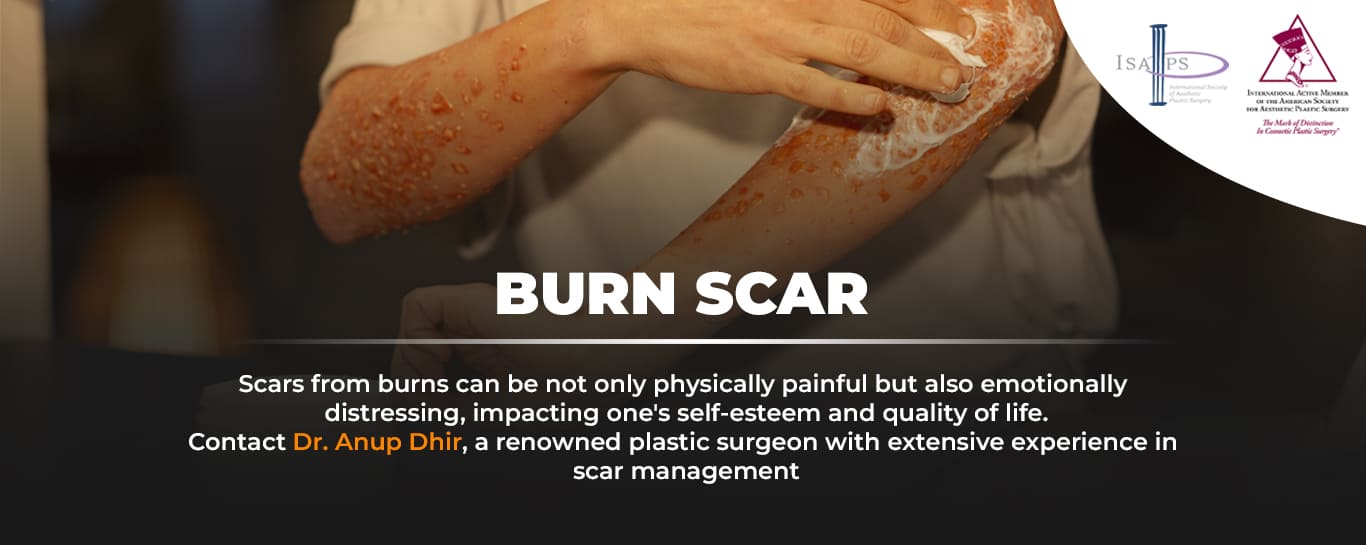
Burn scars can be a painful reminder of a traumatic experience, but with the right treatment, they can be minimized and even eliminated. There are various options available for treating burn scars, ranging from topical creams to surgical procedures
Types of Burn Scars
Before discussing treatment options, it is important to understand the different types of burn scars that can develop. The type of scar will determine the appropriate treatment method, so it is important to consult with a dermatologist or plastic surgeon to determine the best course of action.
1. Hypertrophic Scars: Hypertrophic scars are thick, raised scars that form when the body produces too much collagen during the healing process. These scars often have a red or pink color and may be itchy or painful.
2. Keloid Scars: Keloid scars are similar to hypertrophic scars but extend beyond the original injury site. These scars can be large and may continue to grow over time.
3. Contracture Scars: Contracture scars are the result of severe burns that cause tightening of the skin and underlying tissues. These scars can restrict movement and may affect a person’s range of motion.
4. Atrophic Scars: Atrophic scars are the opposite of hypertrophic scars, resulting in thin, depressed areas of skin. These scars can be caused by a loss of fat or muscle tissue during the healing process.
2. Skin grafting: Skin grafting is a common surgical procedure used to treat burn scars, which are often considered to be one of the most challenging types of scars to treat. When a person suffers from severe burns, the scar tissue that forms can be thick, tight, and highly visible. This can not only lead to physical discomfort and limitations in movement, but it can also cause emotional distress and impact a person's self-esteem. Skin grafting involves taking healthy skin from one part of the body, known as the donor site, and transplanting it to the burned area, known as the recipient site. The skin graft serves as a temporary cover for the wound and helps in the healing process, as it enables the growth of new skin cells over the burned area.
In addition to skin grafting, Z-pasty is a surgical technique that is often used in conjunction with skin grafting to improve the appearance of burn scars. Z-pasty involves making Z-shaped incisions in the scar tissue, which allows the skin to be rearranged and stretched in a way that reduces tension on the scar. This can help to flatten and soften the scar, as well as improve the overall appearance of the skin. The Z-pasty technique is particularly useful for treating thick scars that are causing physical discomfort or restricting movement.
One of the key benefits of using Z-pasty in conjunction with skin grafting is that it can help to break up the scar tissue and make the skin more pliable, which can improve the overall outcome of the skin grafting procedure. By reducing tension on the skin, Z-pasty can help to minimize the risk of complications such as skin contracture, which is when the scar tissue tightens and causes stiffness in the affected area.
Another benefit of using Z-pasty for burn scar treatment is that it can help improve the cosmetic appearance of the scar. By rearranging and stretching the skin in a strategic way, Z-pasty can help reduce the visibility of the scar and create a smoother, more natural-looking skin surface. This can have a significant impact on a person's self-esteem and confidence, as it can help them feel more comfortable in their own skin and more confident in their appearance.
3. Laser Therapy: Laser therapy is a popular treatment option for burn scars, as it can help improve the texture and color of the scar. Different types of lasers may be used, depending on the type of scar and the patient’s skin tone.
4. Surgery: In some cases, surgical procedures may be necessary to improve the appearance of burn scars. This may include Contracture release and skin grafting, flap cover, dermal template reconstruction, Z -plasty, stem cell fat grafting.
5. Pressure Garments: Pressure garments are often recommended for treating hypertrophic and keloid scars by applying constant pressure to the scarred area. These garments can help flatten the scar and minimize itching and discomfort.
6. Scar Massage: Massaging the burn scar with moisturizing cream can help break down scar tissue and improve circulation to the area. This can help soften the scar and promote healing over time.
7. Silicone Sheets: Silicone sheets are another non-invasive treatment option for burn scars. These sheets are applied directly to the scarred area and can help flatten and soften the scar over time. They are typically worn for several hours each day for maximum effectiveness.

Leave a request to connect to Dr. Anup Dhir for an Appointment.